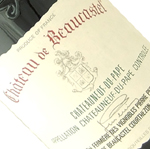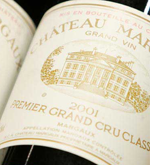How wine is made
All that is needed to turn grape juice into wine is the simple, entirely natural process of fermentation. Fermentation is the chemical change of sugar into alcohol and carbon dioxide gas brought about by yeasts- micro organisms which live(among other places) on grape skins. They need only to have the grape skin broken to go work on the sugar which comprises about 30% of the pulp. And in instant there is wine.
Under normal conditions the yeast will go on working until all the sugar in the grapes is converted into alcohol, or until the alcohol level in the wine reaches about 15% of the volume- on rare occasions when the grapes are so sweet that this happens naturally the yeast is overcome and fermentation stops.
Left to nature, therefore, almost all wine would be dry .But if it is possible to stop fermentation before all the sugar is used up; either by adding alcohol to raise the level up to 15%, or by adding sulphur- both these anaesthetize the yeast, or by filtering the wine through a very fine filter to take the yeast out. These are the methods are used to make sweet wine.
One wine differs from another first and foremost because of differences in the raw material, the grapes. But various ways of arranging the fermentation can be produce all the other differences; between red, white, rose, sweet, dry or sparkling.









